#kyser & lucis
Explore tagged Tumblr posts
Text

kyser's whole body relaxed, a small shock of excitement zipped through him. he forced himself to remain calm, have chill, as he nodded, deep breaths at the idea of getting out of the house, and with lucis at his side. "whatever you want, it's on me." he agreed, stepping back so lucis could do what he needed for them to get on the road.

"Pioneer Park." Lucis repeated, thinking about it for a moment before shutting his laptop. "Let me get dressed," he said knowing very well he wouldn't get his way and stay inside. "You're buying lunch," he said as he got up and stretched. trying to stall as much as he could.
@perfectstcrm
7 notes
·
View notes
Text
THE BOUNDING MAIN!
Nautical Lucy ~ Part 1

There’s nothing as joyous as being on the open water! Whether it be a lake, a river, or the ocean - Lucy was as funny on the sea as on land. Here are some early maritime escapades!
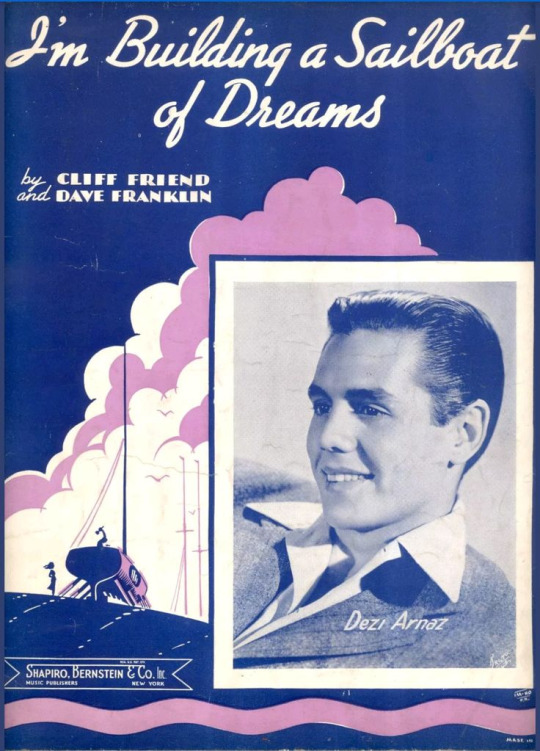
“I’m Building a Saleboat of Dreams” (1939) ~ by Cliff Friend and Dave Franklin, sung by Desi Arnaz.
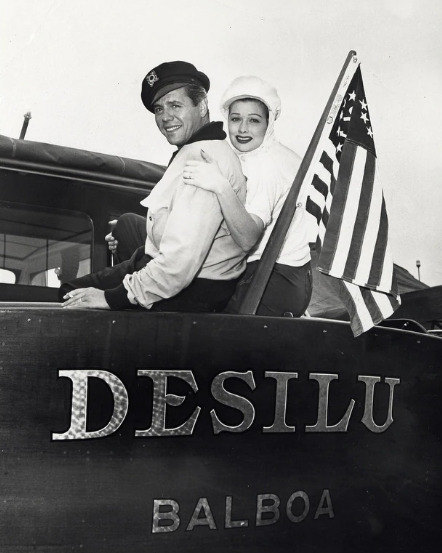
In real life, Desi Arnaz loved fishing and owned a boat called the Desilu. Being from Cuba, he had a special affinity for the ocean.
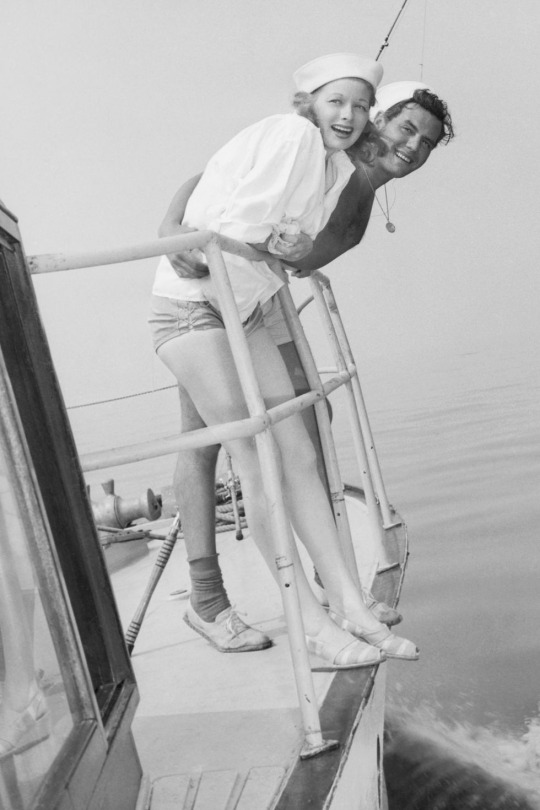
Lucy and Desi leaning over the rail of a motorboat in 1943.
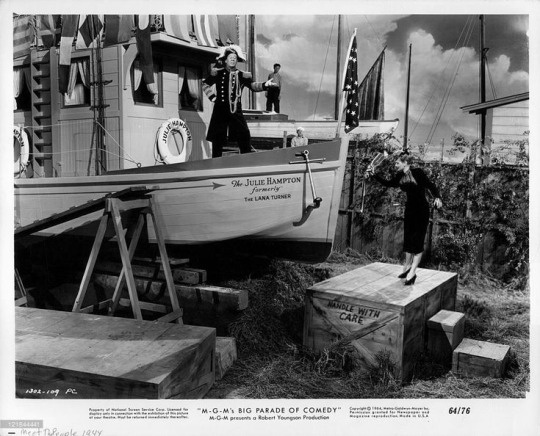
Meet the People (1944) ~ The Commander (Bert Lahr) names his boat after Julie (Lucille Ball). It was formerly the Lana Turner!
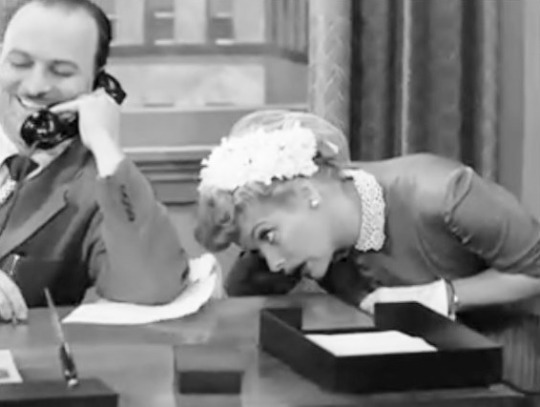
“The Quiz Show” (1948) & “Lucy Gets Ricky on the Radio” (1952) ~ To make sure he wins, Lucy steals the answers, but then they change the questions! The same nautical question was first used on “My Favorite Husband.”
ORIGINAL QUESTION: Why was the steamship Ile de France put in dry dock recently? FISHBOWL QUESTION: Why did the French people put Marie Antoinette under the sharp blade of the guillotine? LUCY’S ANSWER: To scrape the barnacles off her hull.
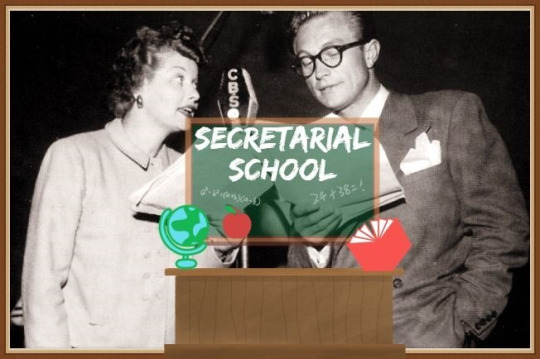
“Secretarial School” (1949) ~ An episode of Lucille Ball’s radio show “My Favorite Husband” references “On A Slow Boat to China” a popular song by Frank Loesser, published in 1948. In October and November 1948, it was recorded by no less than five artists: Kay Kyser, Freddy Martin, Benny Goodman, Art Lund, and Larry Clinton.
GEORGE: “Now explain this last shorthand mystery to me: a circle, a ship, and laundry ticket.” LIZ: “That’s the title of a phonograph record I want to buy - 'A Slow Boat To China’.”
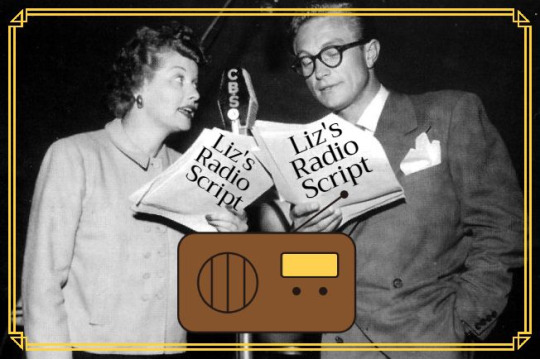
“Liz’s Radio Script” (1950) ~ An episode of “My Favorite Husband” references the inventor of the steamboat and the 1929 musical Show Boat. George makes fun of Liz’s radio script.
LIZ: “Go ahead and laugh. They laughed at Robert Fulton, too, you know!” GEORGE: “Robert Fulton? What did he write?” LIZ: “You think I don’t know? ‘Show Boat’”!
Show Boat’s most famous song, “Old Man River”, would be referenced on several Lucille Ball sitcom episodes.
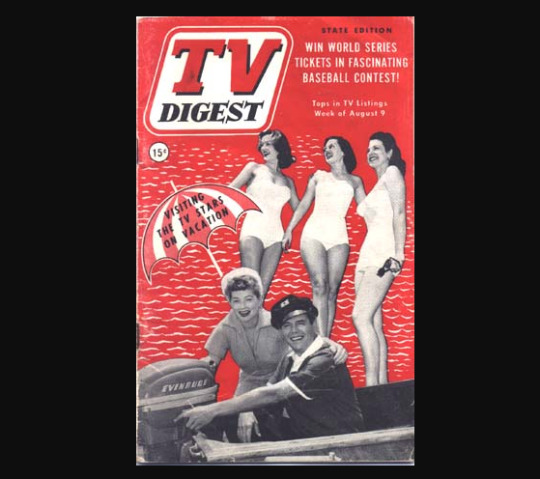
On August 9, 1952 Lucy and Desi were featured on the cover of TV Digest, a competitor of TV Guide as part of their inside story “Visiting The Stars on Vacation”.

The cover photo was part of a larger photo shoot of Lucy and Desi in a motorboat.

“Lucy is Envious” (1954) ~ When a wealthy high school chum (Mary Jane Croft) puts the bite on Lucy for a charitable donation, lucy fibs about owning a yacht.
CYNTHIA: Where do you go in Florida? Miami or West Palm Beach? LUCY: Uh, you go West Palm Beach, huh? CYNTHIA: Miami. LUCY: Oh, we go West Palm Beach. CYNTHIA: But, darling, the harbor's so small there. What do you do with your yacht? LUCY: To make it fit, we crank down the smokestack and squeeze in the poop deck.

“Nursery School” (1955) ~ The first painting Little Ricky does is interpreted as an elephant sailing a houseboat. Lucy says he will be another “Grandpa Moses”!
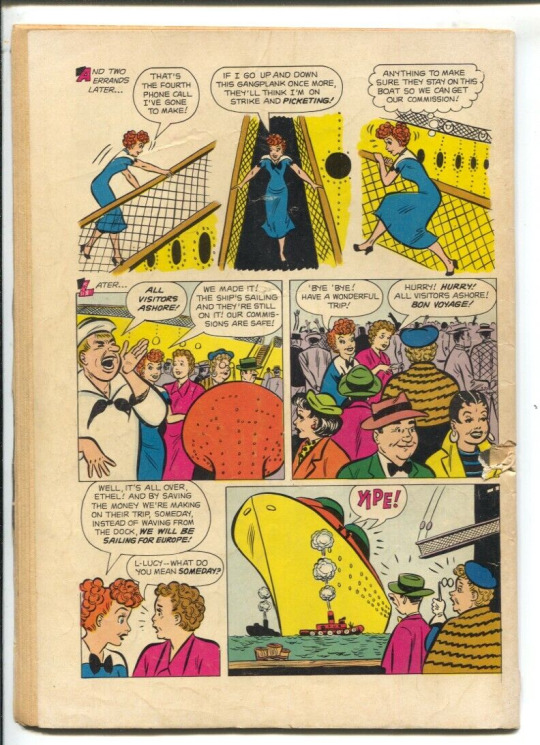
Dell’s “I Love Lucy Comics” (1955) ~ published a story about Lucy and Ethel and a cruise ship - very different from the one on the television show.
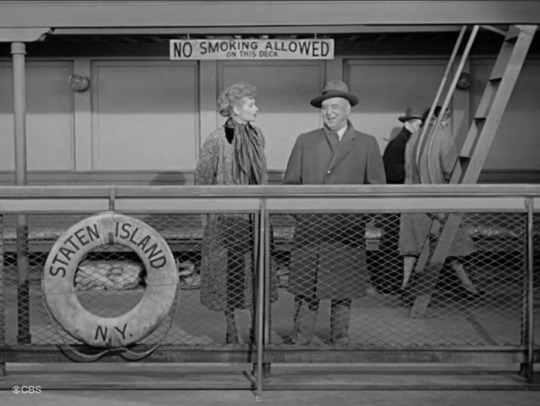
“Staten Island Ferry” (1956) ~ To make sure Fred won’t get seasick on their transatlantic crossing, Lucy accompanies him on a test sailing on the Staten Island Ferry.
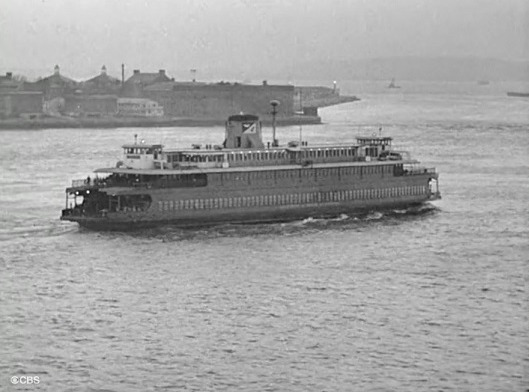
Although the episode was filmed in Hollywood, second unit footage of the real Staten Island Ferry was used. The ferry seen in the episode is named the 'Gold Star Mother,’ which entered service in 1937.

Full of dramamine, both Lucy and Fred conk out on the deck!
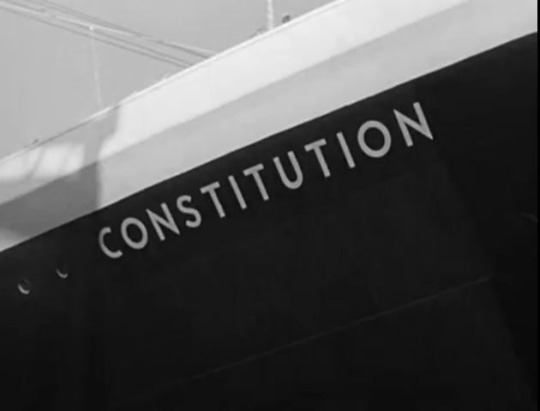
“Bon Voyage” & “Second Honeymoon” (1956) ~ To get the gang to Europe, the show goes by sea on the S.S. Consitution, which was a real life transatlantic liner operated by American Export Lines.
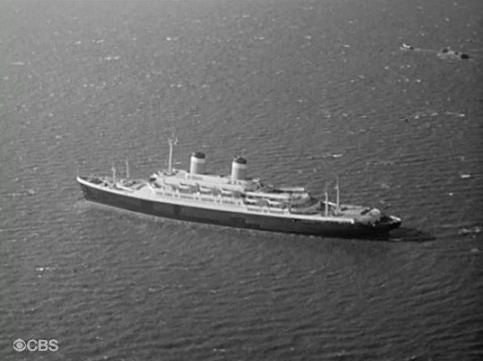
In a last minute deal, the line agreed to supply Desilu with technical support and branded props. This was similar to the deal Desilu made with Pontiac for the trip to California.
ETHEL: This sea air makes me hungry. FRED: We haven’t even left the dock yet. (To the others) Wait till she finds out the food’s free. She’ll be the biggest bundle Britain’s ever seen.
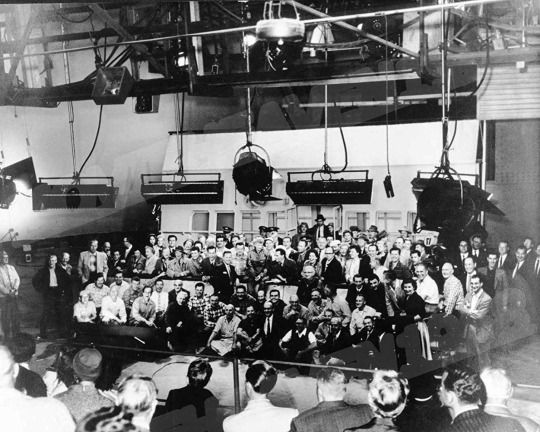
No actual filming was done on the Consitution. Desi Arnaz recreated the ship on the Desilu soundstage, one of the most expensive sets in television history.

Second unit footage of the actual Constitution in New York Harbor was intercut with studio footage, including aerial footage of the Constitution, the pilot boat, and the tug boat. In “Second Honeymoon” (set entirely on the ship), the plot emulates the film Gentlemen Prefer Blondes, ending with Lucy stuck in a porthole, just like Marilyn Monroe in the film.
LUCY: Ethel, what’s the name of this boat? ETHEL: The S.S. Constitution, why? LUCY: From the way everybody’s paired up, I thought maybe it was the S.S. Noah’s Ark!

“Deep Sea Fishing” & “Desert Island” (1955) ~ While vacationing in Miami Beach, the Ricardos and Mertzes make use of a Cruis Along fishing boat. Although Lucy and Desi had actually visited Miami the previous summer, this episode utilizes extensive second unit footage using doubles for the cast.
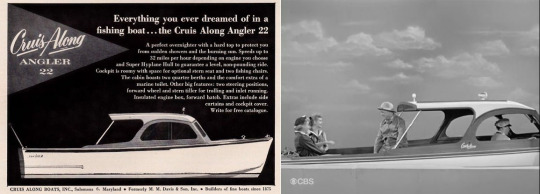
FRED: This Cruis Along is a dandy little boat, Rick!
In addition to the logo being clearly visible on the boat, Fred’s line gives the company verbal advertising. At some point, the company became a subsidiary of the Century Boat Company, which is still in business today.

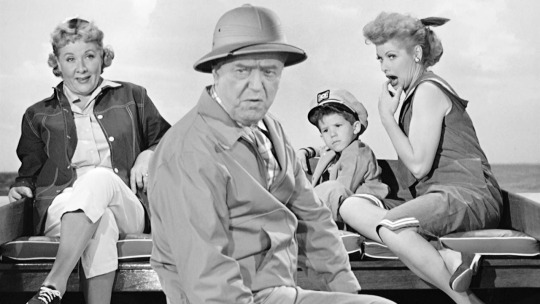
The fishing boat scenes were re-created on a California sound stage using a water tank and rear projection for sea and sky.

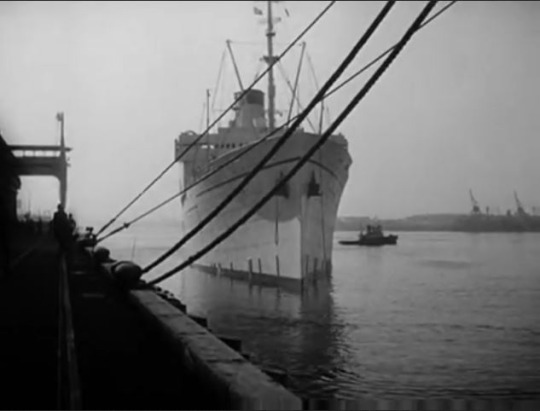
“Lucy Takes a Cruise To Havana” (1957) ~ The very first hour-long adventure of the Ricardos and Mertzes tells how Lucy and Ricky met when she took a cruise from New York to Havana with her friend Susie MacNamara (Ann Sothern) in 1940. As usual, the episode combines studio footage and insert shots of the actual ship.
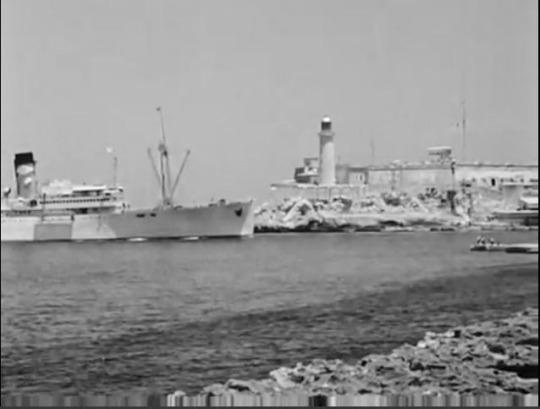
The ship that Lucy and Susie sail on is the R.M.S. Caronia, which was a real-life Cunard Line vessel. However, the ship did not enter service until 1949 and this episode is set in 1940. Cunard was then known as Cunard-White Star Line.
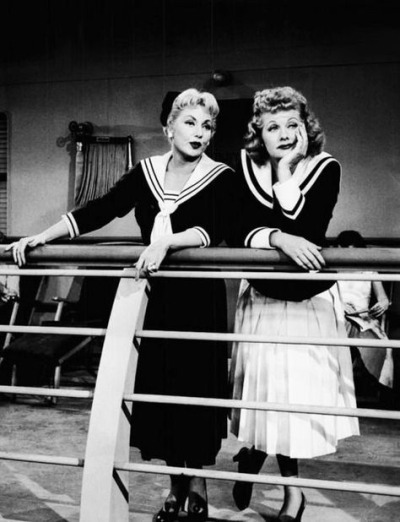
Single Susie calls the ship the S.S. YWCA (Young Women’s Christian Association). Bachelorette Lucy mentions that she heard that this was the ship’s 'maiden’ voyage – making a pun about the lack of available men on board. Coincidentally, Fred and Ethel Mertz are on the ship as well – on a belated Honeymoon cruise - even though they were married in 1928!
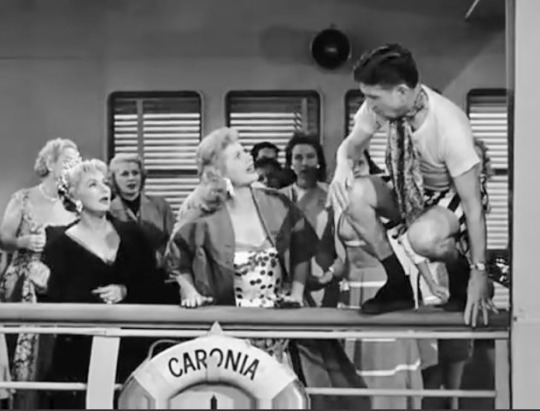
Also sailing is crooner Rudy Vallee, who jumps overboard to escape his female fans.
CRUISE DIRECTOR: “If Mr. Cunard ever hears about this I’ll be demoted to the Albany Night Boat.”
While filming second unit footage in and around Havana, revolutionary violence broke out. Desi instructed his crew to get out of there fast!
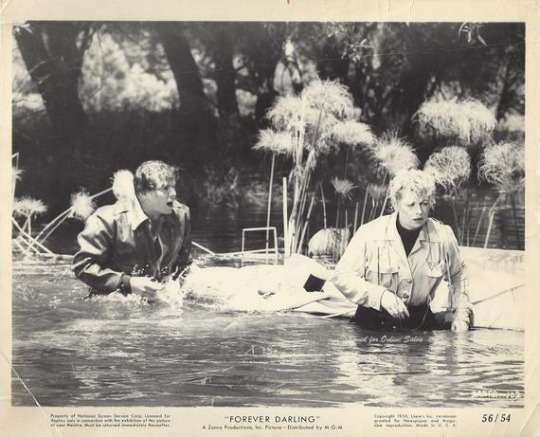
Forever Darling (1957) ~ Lucy and Desi play Susan and Lorenzo Vega. Chemist Lorenzo is developing an insecticide and plans to test it on a camping trip with Susan, but rafting on the lake to collect specimens lands them both in the drink!

“Lucy Goes to Mexico” (1958) ~ The end of this hour-long episode is set aboard the U.S.S. Yorktown, one of 24 Essex-class aircraft carriers built during World War II for the US Navy.
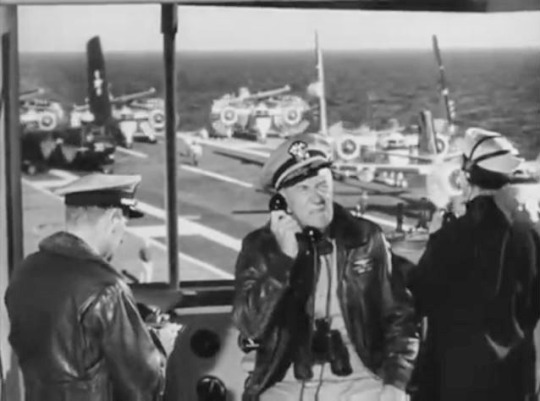
The Admiral of the Yorktown says he’s been leery of actors ever since he saw The Caine Mutiny, the action of which is set on the U.S.S. Caine. The 1954 film starred "I Love Lucy” and “Comedy Hour” performers Fred MacMurray, Claude Akins, and Van Johnson. The stage play The Caine Mutiny Court-Martial was mentioned by Miss Hanna (Ellen Corby) in “Lucy Meets Orson Welles” (1956).

“Lucy’s Summer Vacation” (1959) ~ Lucy and Ricky escape to a lakeside cabin in Vermont. Unfortunately, it has been double booked - with Howard Duff and Ida Lupino. Howard and Ricky want to do nothing except fishing. Lucy drills holes in the row boat to keep the men in the cabin, not on the lake.
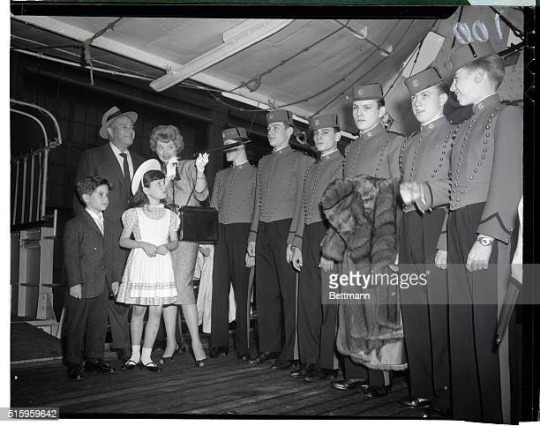
The Arnaz family boarding the French Line’s S.S. Liberté in New York in 1959. Greeted by a line of the ship’s bellhops, one of who holds Lucy’s fur coat for the photo. Liberté was featured prominently in the Jane Russell film The French Line. Liberté made an appearance in the opening credits of the 1953 film How to Marry a Millionaire, as well as the 1954 classic film Sabrina, starring Audrey Hepburn and Humphrey Bogart. She was scrapped in 1962.
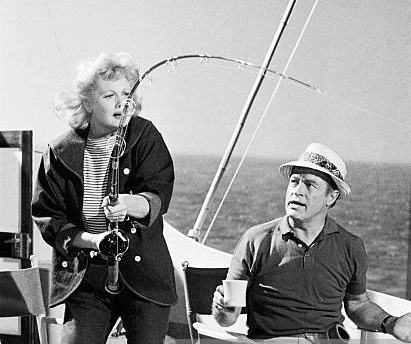
Facts of Life (1960) ~ Lucy and Bob Hope play married folks - but not to each other - who are flirting with infidelity. Abandoned by their spouses and a third couple for deep-sea fishing on their Acapulco vacation, Larry and Kitty bond on the high seas.

“Lucy Buys a Boat” (1963) ~ Lucy talks Viv into buying a boat that’s barely seaworthy. When they finally get it on the lake, it slips away from its moorings, trapping a seasick Viv and a bossy Lucy without a sail.
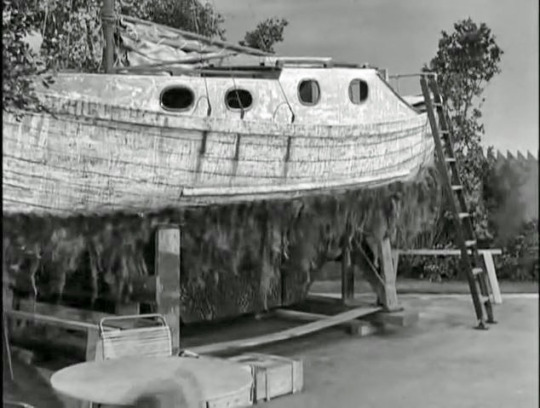
An ad in the Danfield appeals to Lucy, who said when she was a little girl she practically lived on boats.
Answer the call of the seven seas! An unforgettable adventure for your whole family! For sale: 26 foot sailboat, sleeps 5, large galley, complete with trailer, only $100 down.
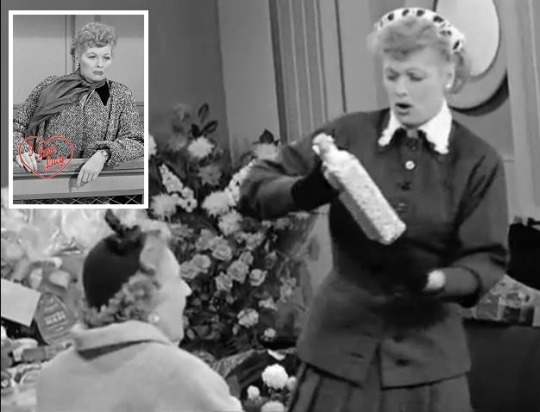
Lucy says that Viv has brought enough seasickness pills for the Queen Mary. Lucy Ricardo also brought a supply of seasickness pills when sailing on the S.S. Constitution (above).

Then the leaks start springing up!
Nautical Vocabulary!
VIV: “I’m afraid I’m just a landlubber at heart.”
Landlubber ~ Lubber is an old word (dating from the 14th century) meaning a clumsy or stupid person. The term landlubber refers to an unseasoned sailor.
VIV: “I’ll bet this is the first time anybody’s been shanghaied on a lake.”
Shanghaied ~ force someone to join a ship lacking a full crew by coercion or other underhanded means.
JERRY (to LUCY): “You’d better give us a rest, or you are going to have your first mutiny.”
Mutiny ~ an open rebellion against the proper authorities, especially by soldiers or sailors against their officers. The most famous in popular culture was in Mutiny on the Bounty, so Jerry is continuing the analogy of Lucy to Captain Bligh.
VIV (to LUCY): “Oh, go shiver yer timbers.”
“Shiver Me Timbers” ~ is an exclamation usually attributed to the speech of pirates in works of fiction. The word ‘shiver’ means “to break into small fragments or splinters” while the ‘timbers’ refer to the wooden support frames of old sailing ships. So the saying was most likely alluding to the shock of a large wave or cannonball causing the hull to shudder or split asunder.
LUCY (into telephone): “We’ve been working on her for days and she’s really yar!”
Yar ~ When a boat is trim, responsive, and in all ways lively in handling. In The Philadelphia Story (1940), Kate Hepburn’s character famously says about a boat “My, she was yar!”

In 1965, Lucy and Gary Morton attend the premiere of the film Ship of Fools, based on the book by Katherine Ann Porter set aboard an ocean liner from Germany from Mexico in 1933. The film was a punchline in “Lucy and the Little Old Lady” (1972).
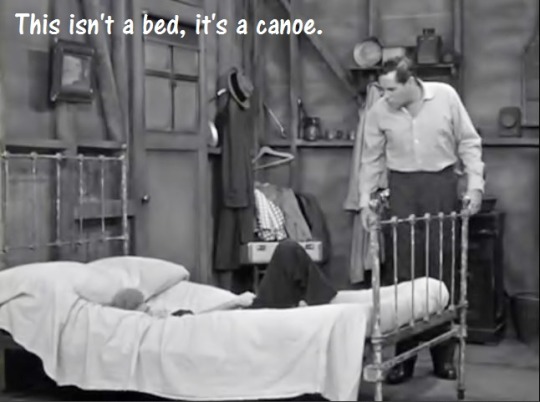
#I love lucy#Lucille Ball#Desi Arnaz#Vivian Vance#William Frawley#Boats#Ships#The Lucy Show#Facts of Life#Ida Lupino#Howard Duff#Ann Sothern#Rudy Vallee#Bob Hope#RMS Caronia#SS Constitution#Staten Island Ferry#Frank Nelson#Bert Lahr#desilu#Meet The People#TV#Movies
1 note
·
View note
Note
linda seton from holiday (1938)!!
LINDA SETON from Holiday (1938)

Okay but the whole playroom aspect gave me a lot in the middle and was something I did not consider in a previous Holiday (1938) playlist I made for myself. Thank you Lucie! <3 <3 <3
"Love On The Run (Main Title)" - Franz Waxman
"Nice Work If You Can Get It" - Tommy Dorsey
"The Wedding Of The Painted Doll" - Earl Burnett & his Los Angeles Biltmore Hotel Orchestra
"Golliwog's Cakewalk (Debussy)" - Seong-Jin Cho
"Jimbo's Lullaby" - Seong-Jin Cho
"Circus Circus" - John Barry
"Aba Daba Honeymoon" - Debbie Reynolds & Carlton Carpenter
"What Are You Doing New Year's Eve?" - Kay Kyser
"Change Partners" - Frankie Valdor
"Auld Lang Syne" - Guy Lombardo
"The Best Things In Life Are Free" - June Allyson
"Zing! Went The Strings Of My Heart" - Carmen Cavallaro
"I Got Rhythm" - Jimmy Dorsey
24 notes
·
View notes
Audio
10/5/20.
Finally...a band I to which I often refer, buick, has reissued their only release in all of its glory. Originally released in 1992, this band was certainly a product of it’s time, but ahead as well. Yes, there are obvious (as the band concedes) nods to Sonic Youth. But there is so much more here. This was recorded well before the “formation of Mogwai, Godspeed You Black Emperor, Explosions in the Sky”. To me, this sounds as vital today as it was back in the early 1990s. In fact, Scott’s mentioned that his “favorite reference to possible influence[s] came from Thin White Rope's Guy Kyser when he stated after one of our shows, "You sound like Dick Dale with his brains knocked out." This is made all the more funny since I didn't know who Dick Dale was at the time.”
buick was Scott Lawrimore (guitar) and Jeff Clark (drums). While a drum-guitar duo isn’t weird today (Japandroids or No Age come to mind), in 1992 there wasn’t a band like them (maybe Spinanes...but not really).
Generally speaking, the band wasn’t entirely happy with the original mix - both felt it missed their quiet/loud arrangements. So, Scott enlisted John McEntire (Tortoise, The Sea and Cake) to remix.
But, only a guitar, and drums? How do you get this much out of two instruments. I asked Scott Lawrimore to comment:
How did you get the sound you did (on guitar)?Most cuts only have one guitar —like in our live performances—recorded in one take on two tracks. One mic was on a Fender Twin Reverb (made in the same year I was, 1970) in a large gym-sized room, and one mic was simultaneously capturing a 4x12 speaker cabinet in a small tiled bathroom. The bass and mids were turned waaaaay up, and the treble ratcheted down on the Twin to counter the jagged, jangling highs produced by the humbucker pickups on the Rickenbackers I used for most songs. Since we were just guitar and drums, all songs use open tunings and those bass-heavy amplifier settings to flesh out a ringing wall of sound behind the main guitar phrasing. I'm sure the tunings have official musical nomenclature, but I discovered them on my own through trial and error. As a self-taught, unconventional guitarist, open tunings helped me to 'find my sound' while also cutting me slack for not being anywhere near a virtuoso. There were four different guitars used for the album: a 1990 solid-body Rickenbacker 610 (for Lucy Conrad, Excellent Liar); a 1980 hollow-body Rickenbacker 330 (for Homage to Lucien Freud, Badhead, The Moon is Not a Yellow Sow, and Immortality); a 1970 Fender Jaguar (for Phrenology, and Brown Blackstars); and my first guitar, a sweet $100 pawn shop Les Paul copy (for Graves). The hollow-body Ric was my preferred guitar because it produced the most controllable 'voiced' feedback (a ridiculous amount, actually). Typically this would not be sought after, or embraced, but everytime you hear feedback on the album, it's intentional and coming from that 330. I always loved showing up to gigs with that guitar and the audience assuming we were going to whip out some Byrds or R.E.M. jangle, and then SCREEEEEEEEEECH!!!!—that first ear-piercing feedback driving half the audience out of the room...
Did Jeff just get to create his own sound?
Origin Story:[Scene opens on the crunchy, tabouli-stained Coffee House of UC Davis just before the summer break of 1990; Scott is behind a cash register wearing a t-shirt he recently spray-painted with the word "Hectic" under a smelly thrift store suit jacket three sizes too big; Jeff approaches wearing an On-The-Waterfront-leather-jacket over a 10,000 Maniacs t-shirt, his grease-slick-black hair partially hidden by a Stanford baseball cap.] Jeff [apropos of nothing in particular]: Wanna start a band? Scott [thrown off by 10,000 Maniacs shirt]: What do you play?J [confidently]: Nothing yet, but I'm going to teach myself to play the drums this summer.S [skeptically and expecting to maybe never see Jeff again]: Ok. Let's try to get together when you get back... Not-such-a-spoiler Alert: Jeff taught himself to play the drums that summer. Apparently he holed himself up in an unused bedroom of a house he was taking care of in southern California and tried to play along with the first two Throwing Muses albums that he had on constant repeat. Funny in hindsight that that is the band he chose considering what we ended up sounding like, but if you listen carefully to their songs like Call Me or Juno, you hear a lot of what was to become Jeff's rumbling tom work and syncopated fill sensibilities. In terms of whether I had a hand in Jeff's sound for our songs, the short answer is "no." When we played together for the first time, I had figured out all the parts for precisely one song—we called it First Song for a long time before naming it Homage to Lucien Freud for the original CD. For the opening chord progression, and just to get us started, I asked Jeff if he could play the drums of Sonic Youth's Tunic (Song for Karen) from the Goo album that had been released that summer. Of course he could. Perfectly. We played that six-chord progression three or four times through like we had been playing together forever when someone banged on the door yelling for us to "turn it fucking down." That was the abrupt end of our first session, but set the tone for everything that was to come... The fact that Homage to Lucien Freud now begins with Jeff's rumbling toms and bears little resemblance to Tunic is a testament to how all of our songs tended to evolve collaboratively. I would have a number of 'parts' or quiet/loud 'moments' or remedial-math-rock 'transitions' that I would play for Jeff and then he would figure out all the drum details for those sections. I had an ear and desire for song dynamics, but it was Jeff that perfectly filled and requited them. Learning those transitions and moments was key, but many songs had sections that we never played the same way twice—the call-and-response section starting at the 1:38 mark of Graves, for example, or the harmonics-to-mayhem-chord section starting at 1:54 mark of Badhead. When we played live, I would simply indicate to Jeff that a change was coming and he would be there with something amazing.
Scott Lawrimore is currently in London, UK (and has had a full career in art/curating/teaching), and Jeff Clark is in Ypsilanti, Michigan (and has had a full career as a graphic designer). This album was originally released on Lather Records (Sacramento, CA). The reissue is self-released.
#buick#Scott Lawrimore#Jeff Clark#Lather Records#Sacramento#California#London#UK#Sonic Youth#Mogwai#Explosions in the Sky#Godspeed You Black Emperor#Japandroids#No Age#John McEntire#Tortoise#The Sea and Cake#Spinanes#R.E.M.#The Byrds#Rickenbacker#Dick Dale#Guy Kyser#Thin White Rope#Ypsilianti#Michigan
2 notes
·
View notes
Photo

TV Guide - April 2 - 8, 1960
Ernest Jennings Ford (February 13, 1919 – October 17, 1991), known professionally as Tennessee Ernie Ford, recording artist and television host who enjoyed success in the country and Western, pop, and gospel musical genres. Noted for his rich bass-baritone voice and down-home humor, he is remembered for his hit recordings of “The Shotgun Boogie” and “Sixteen Tons”.
He took over from band-leader Kay Kyser as host of the TV version of NBC quiz show Kollege of Musical Knowledge when it returned briefly in 1954 after a four-year hiatus. He became a household name in the U.S. largely as a result of his hilarious portrayal in 1954 of the ‘country bumpkin,’ “Cousin Ernie” on three episodes of I Love Lucy.
Ford subsequently helmed his own prime-time variety program, The Ford Show, which ran on NBC television from October 4, 1956, to June 29, 1961. The show was named not after Ernie, but rather, the sponsor – Ford automobiles. Ford Theatre, an anthology series, had run in the same time slot on NBC in the preceding 1955–1956 season. Ford’s program was notable for the inclusion of a religious song at the end of every show; Ford insisted on this despite objections from network officials who feared it might provoke controversy. This became the most popular segment of his show. He earned the nickname “The Ol’ Pea-Picker” due to his catch-phrase, “Bless your pea-pickin’ heart!”.
From 1962 to 1965, Ford hosted a daytime talk/variety show, The Tennessee Ernie Ford Show (later known as Hello, Peapickers) from KGO-TV in San Francisco, broadcast over the ABC television network.
In 1968, Ford narrated the Rankin/Bass Thanksgiving TV special The Mouse on the Mayflower. The mouse narrator seen at the beginning of the special, William the Churchmouse, was a caricature of Ford. (Wikipedia)
4 notes
·
View notes
Text
“I also did some musicals with Kay Kyser. My option was picked up each year with an automatic increase in salary, so that eventually my little $50 a week rose to $1,000.”
—Lucille Ball, Love, Lucy.
“What cost $1000 in 1938 would cost $18036.66 in 2018.” (https://westegg.com/inflation/infl.cgi)
Woah!
1 note
·
View note
Text
Hear Cincinnati Podcast: What happened to Kyle Plush; Jesse Jackson takes on <b>Kroger</b>
This week on Hear Cincinnati, host Brian Niesz, digital reporter Lucy May, editor Meghan Wesley and content coordinator Scott Kyser discuss Fiona, undocumented immigrants, Mark Zuckerberg's testimony to congress, the Paterno TV movie, new reports on smoking while pregnant and more. Brian then ... from Google Alert - "fred meyer" | "king soopers" | kroger | ralphs | fry's | qfc | dillons | -"john kroger" -"qatar" -"stephen fry" https://ift.tt/2IT3n6H via IFTTT
0 notes
Text

kyser tried not to think about how those words felt wrong, but he just nodded, searched around for his sweater and waited at the door. he didn't mind driving, kyser found most peace and resolution when he was driving, likely from the loser laps he used to drive around his hometown. he pulled up to get them food, music playing on the radio quietly.

"It better be i'm putting on clothes for you." he said as he went to get changed, he couldnt exscally go out wearing stained sweatpants and a dingy band shirt from his little brother's band. they were comfortable though and he preferred to work in comfort. "alright, let's go." he said after he got changed.
7 notes
·
View notes
Text
HOLLYWOOD BOND CAVALCADE
September 4, 1943
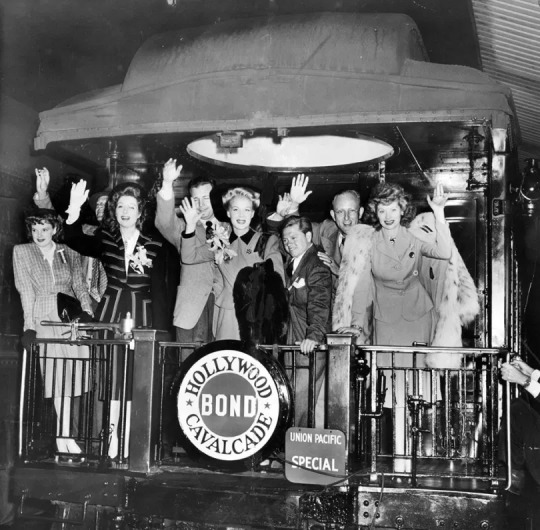
On September 4, 1943, the Hollywood Bond Cavalcade departed to raise money for America’s Third War Loan. It began in Washington DC and went through 16 American cities before ending in San Francisco 21 days later. Millions of Americans flocked to these events buying war bonds as their tickets, with seat prices ranging from $18.75 to $1 million. After crossing 10,091 miles, the campaign raised a total of $40,110,000 and pushed America’s War Loan over the $2 billion mark.
The Hollywood Victory Committee was an organization founded on December 10, 1941 during World War II to provide a means for stage, screen, television and radio performers that were not in military service to contribute to the war effort through bond drives and improving morale for troops. It was associated with the Screen Actors Guild. The Committee organized events between January 1942 until August 1945. Its first chairman was Clark Gable.

This was not the first such event. In 1942, Desi Arnaz participated in the Hollywood Victory Caravan. He was joined by stars Joan Bennett, Joan Blondell, Charles Boyer, James Cagney, Claudette Colbert, Jerry Colonna, Bing Crosby, Olivia de Havilland, Cary Grant, Charlotte Greenwood, Bob Hope, Frances Langford, Laurel and Hardy, Bert Lahr, Groucho Marx, Frank McHugh, Ray Middleton, Merle Oberon, Pat O'Brien, Eleanor Powell, and Risë Stevens. The Caravan show played in 12 cities and netted over $700,000 for Army and Navy relief funds. [Note that in the above Minneapolis welcome sign, Desi’s surname is mis-spelled!]
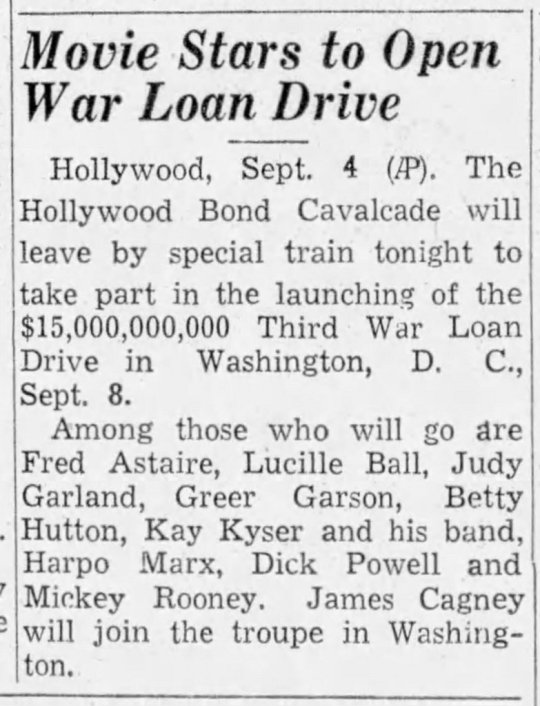
Along with Lucille Ball, some of the celebrities involved included:
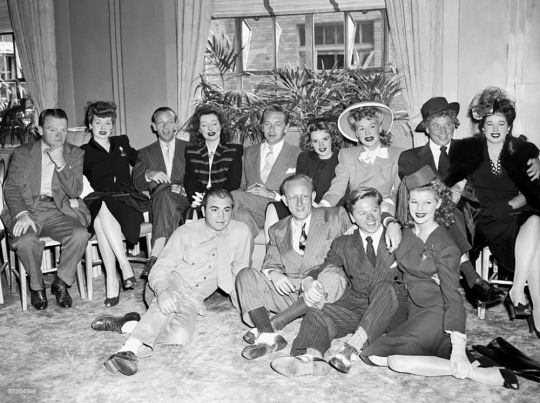
James Cagney ~ had just opened his film Johnny Come Lately on September 3, 1943.
Judy Garland ~ won a 1940 special Oscar for her contributions to film. In September 1943, she released Thousands Cheer (co-starring Lucille Ball) and two months later, Girl Crazy with Mickey Rooney.
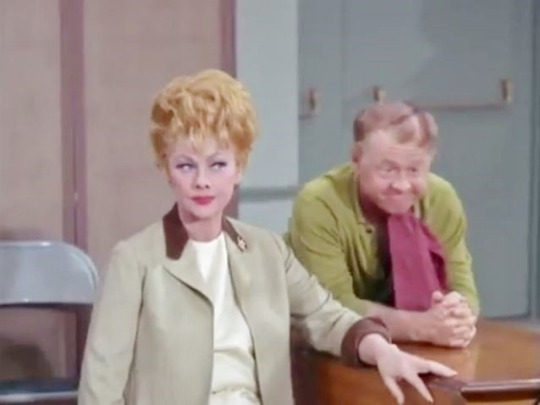
Mickey Rooney ~ was also in Thousands Cheer with Garland and Ball, as well as premiering Girl Crazy with Judy Garland in November 1943. Rooney won Oscars in 1939 and 1940. In 1966 he played himself on an episode of “The Lucy Show.”
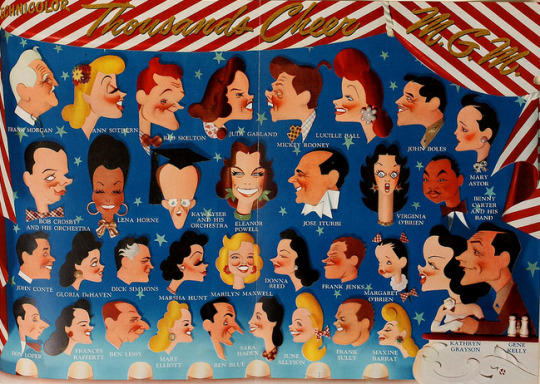
Kay Kyser ~ was a bandleader who made his film debut with Lucille Ball in That’s Right - You’re Wrong. He made four films in 1943, including Thousands Cheer.
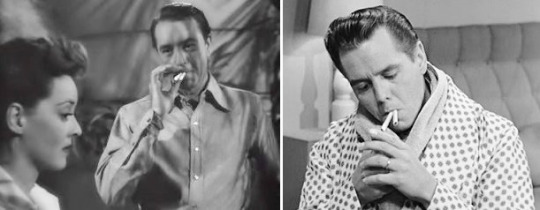
Paul Henreid ~ was most known for playing Victor Laszlo in Casablanca (1942). His name was mentioned on “I Love Lucy” in “The Adagio” (ILL S1;E12) when Ricky lights two cigarettes at once, just a Paul Henreid did for Bette Davis in 1942′s Now Voyager.
Greer Garson ~ won Oscars in 1940, 1942, and 1943, for Mrs. Miniver, her most recent success at the time. She had a film in release called The Youngest Profession and was about to debut another hit, Madame Curie.
Betty Hutton ~ was an actress and singer who was seen that summer of ‘43 in Let’s Face It, starring Bob Hope.
Kathryn Grayson ~ was yet another Cavalcade member starring in Thousands Cheer.

Harpo Marx ~ is best known for the act he developed with his brothers that was a hit on Broadway and screen. He was a silent clown in an over-sized raincoat and fright wig. Lucy and Harpo had appeared together in Room Service in 1938. In 1955, he guest-starred on “I Love Lucy” (S4;E28) as himself.
Fred Astaire ~ was one of Hollywood’s most legendary dancers. In July 1943 he released The Sky’s The Limit with Joan Leslie. In 1943, he had already done three musical films with Lucille Ball, and was about to film a fourth - Ziegfeld Follies. His name was mentioned on two episodes of “I Love Lucy.”
Olivia DeHavilland ~ was a two-time Oscar nominee at the time of the Cavalcade. She memorably played Melanie Wilkes in Gone With The Wind in 1939.
Martha Scott ~ was a 1940 Oscar nominee for the screen version of Our Town. Her film Hi Diddle Diddle was in release during the summer of 1943.
Dick Powell ~ was preparing to premiere Riding High with Dorothy Lamour in November 1943. He was about to start filming Meet the People with Lucille Ball, which opened in 1944.
The stars participated upon behest of the US Treasury Department.

A special 11-car Union Pacific Railroad train carried the stars from Los Angeles, to Washington DC for the kick-off.

Union Pacific Railroad provided access to their new Domeliner for location and second unit footage on “I Love Lucy” during “The Great Train Robbery” (S5;E5).
Tour Schedule:
Sept 4 - Depart Los Angeles
Sept 8 – Washington, DC
Sept 9 – Philadelphia
Sept 10 – Boston
Sept 11 – New York
Sept 12 – Pittsburgh
Sept 13 – Cleveland
Sept 14 – Detroit
Sept 15 – Cincinnati
Sept 16 – Chicago
Sept 17 – Minneapolis
Sept 18 – St Louis
Sept 20 – New Orleans
Sept 21 – Dallas
Sept 22 – San Antonio
Sept 25 – San Francisco
Sept 26 & 27 – Los Angeles
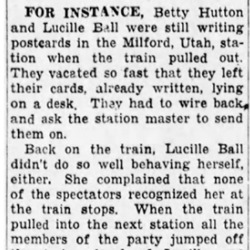
A Typical Cavalcade Performance (depending on celebrity availability)
Kay Kyser served as master of ceremonies and started the show with his band's theme "Thinking Of You". James Cagney came on to read a poem - "What Do We Do When We Buy A Bond" - and did two numbers and a dance from Yankee Doodle Dandy, for which he had recently won the Academy Award. Dick Powell then crooned some of his hits: "Don't Give Up The Ship," "Let's Get Lost," "In My Arms," and "Happy Go Lucky".
Harpo Marx would intermittently chase a blonde across the stage. He eventually settled down to play two harp solos, bang on the piano, wheeze on the harmonica, and finally played a pantomime poker game with Lucille Ball, who had appeared with Harpo in Room Service in 1938 and learned physical comedy at his knee. Harpo ended the game by cutting the cards with an ax!
After Fred Astaire danced, Kyser brought down the house with a burlesque imitation of his style. Mickey Rooney did imitations of Franklin Roosevelt, Eleanor Roosevelt, Herbert Hoover, Wendell Wilkie, and then played the drums.
Betty Hutton performed some hot boogie-woogie. Judy Garland sang "The Man I Love," "Embraceable You," and "Blow, Gabriel, Blow."
Greer Garson urged continued bond purchases, saying, "If we relax, if we don't back the attack, the war will go on indefinitely."

Upon arrival in Washington DC on September 8, Lucille Ball and the stars paraded through the streets in military jeeps, waving to the assembled crowds on their way to the Washington Monument. A similar parade was held in most all subsequent cities.
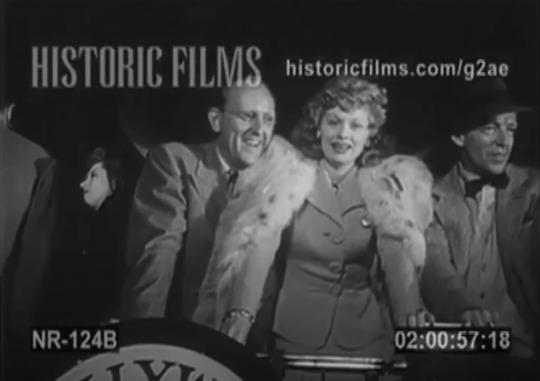
After departing DC, the stars embarked on a 15 city ‘barn-storming’ tour of American cities.
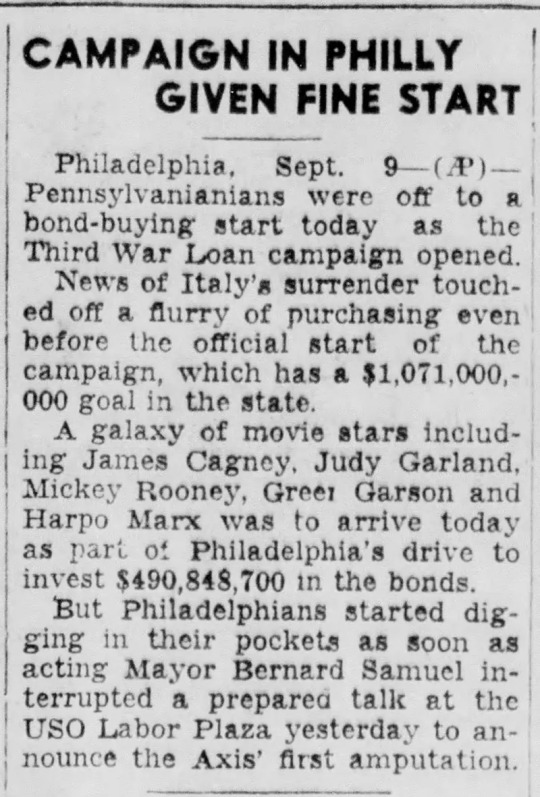
September 9 ~ the Cavalcade played Philadelphia's Convention Hall...

...and moved to play Boston on September 10.
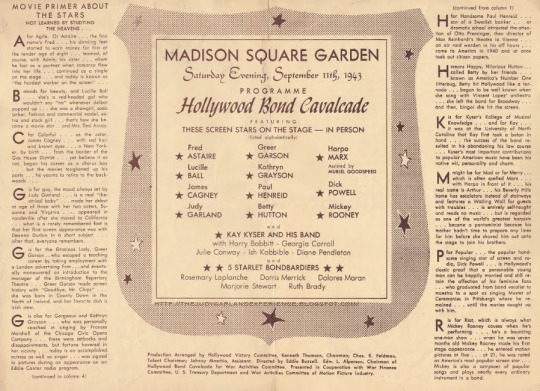
September 11 ~ at Madison Square Garden in New York City. It was here that Betty Hutton announced her engagement to camera manufacturer Ted Briskin. They tied the knot in 1945 but the marriage ended in divorce in 1951.
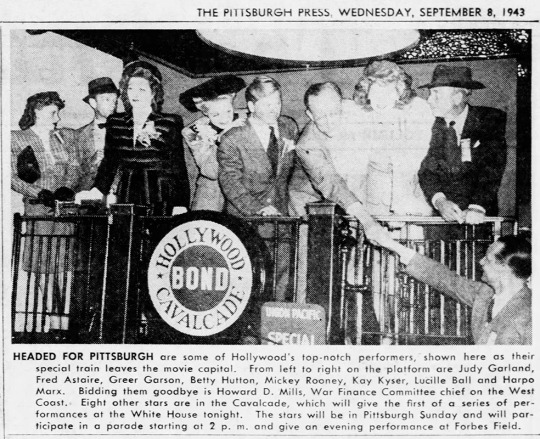
September 12 ~ Pittsburgh, Pennsylvania. The newspapers promoted its arrival with this photo from their Los Angeles departure.

September 13 ~ the Cavalcade rolled through Cleveland, Ohio the stars spoke to an assembly of Defense Workers. That night, at the Civic Auditorium, Kay Kyser auctioned off an American flag for $10,000,000 and two pounds of butter and a three pound steak for $100,000 each!

September 14 ~ Detroit, Michigan

September 15 ~ Cincinnati, Ohio. Stars rode into town on chartered Cincinnati Street Railway buses kicked off at Union Station. Lucille Ball is 8th from the right, next to Harpo Marx.
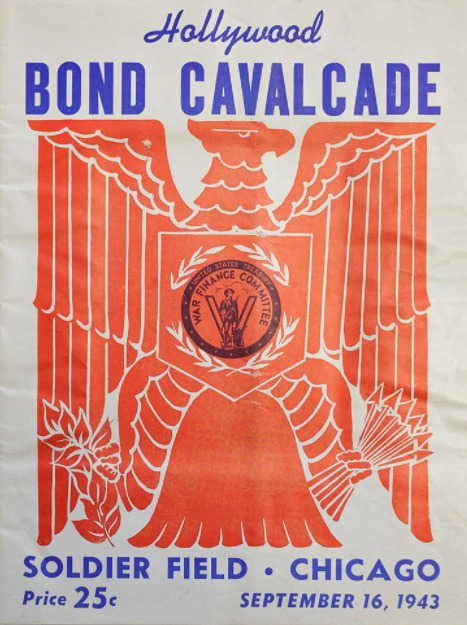
September 16 in Chicago’s Soldier Field.

September 17 in Minneapolis, Minnesota.
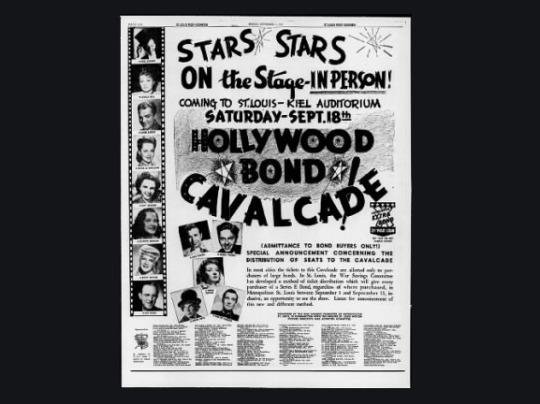
September 18 in St. Louis, Missouri at the Kiel Auditorium. Most of the stars lodged at the Hotel Jefferson, where police had to chase 300 autograph hounds out of the lobby. They also had to drag a high school girl out from beneath Fred Astaire's bed. In another incident, surging fans shattered a plate glass window, which tore Judy Garland's dress to shreds.
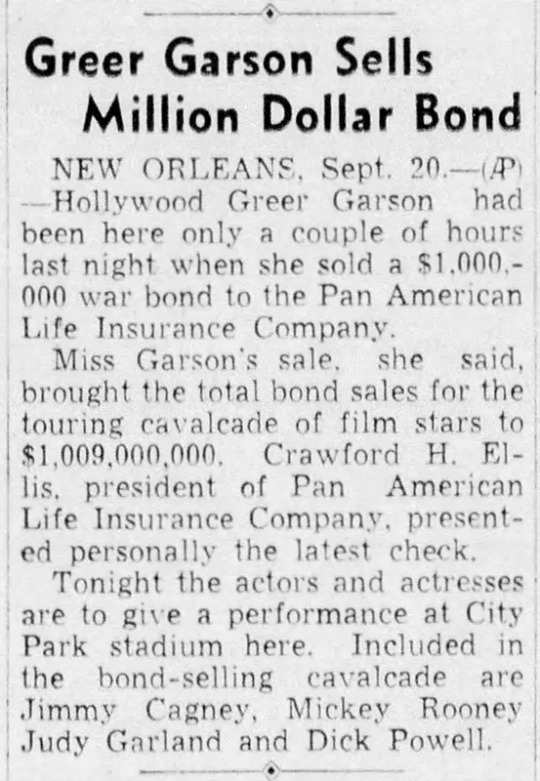
September 19 was left as an ‘open’ day in New Orleans, Louisiana, before their official performances on September 20 at the Tad Gormley Stadium. Variety reported the crowd at 50,000, The States stated it was between 65,000 and 75,000, while The Item claimed 100,000 showed up, despite the actual venue only seating 35,000!

September 21 in Dallas, Texas at the Cotton Bowl...
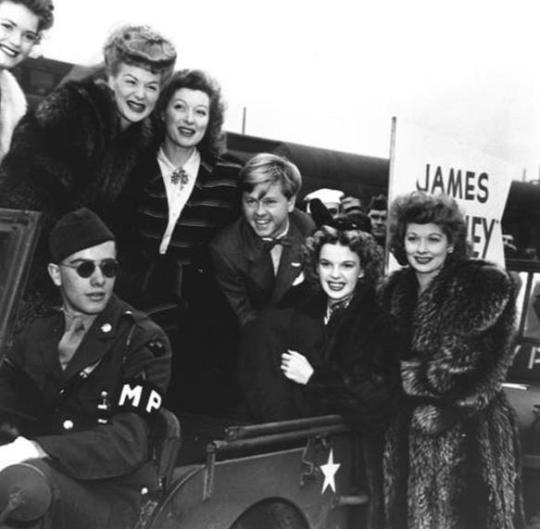
...and in San Antonio, Texas on September 22.
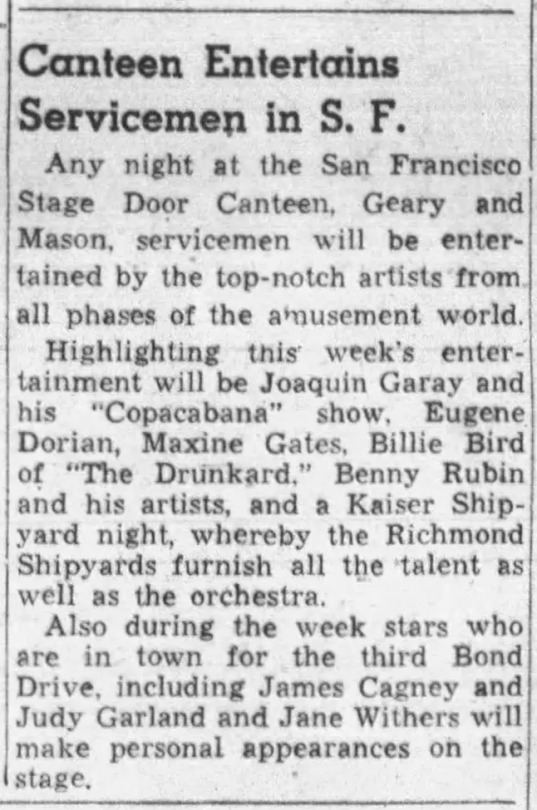
September 25 in San Francisco to perform...
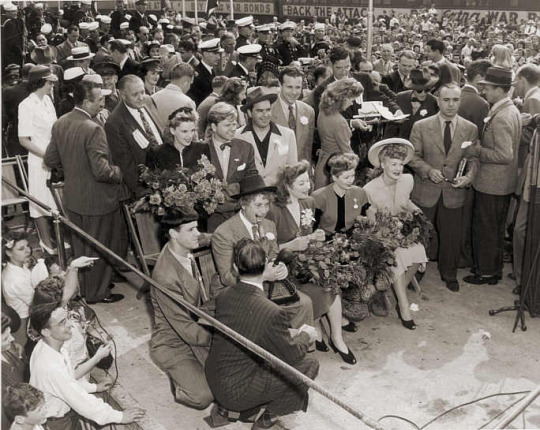
...and on September 26 went home to Los Angeles to conclude the 10,000 mile tour. A crowd of 6,000 greeted them at the station in Glendale as the Navy Band played "California, Here I Come."
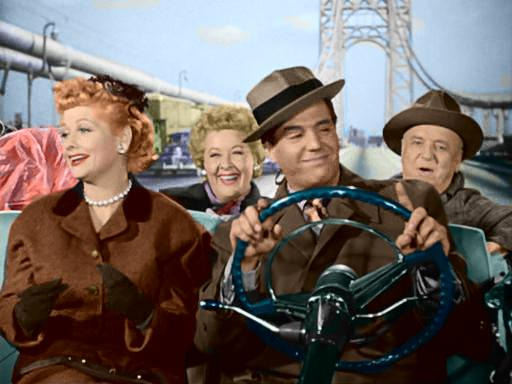
The song would memorably be sung on “I Love Lucy” to launch the Hollywood episodes in 1955.
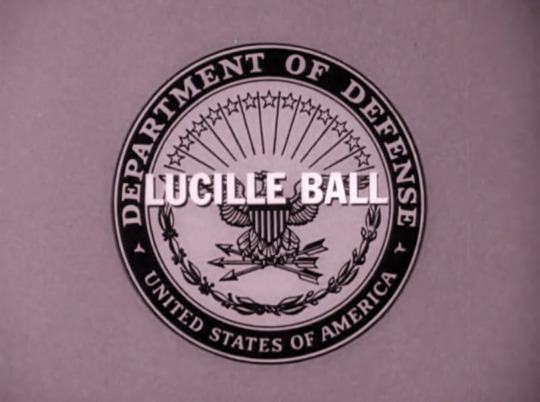
Lucille Ball helped sell bonds throughout her career. Click here for a look at Lucy and US Savings Bonds!
16 notes
·
View notes
Text
HEDDA HOPPER
May 2, 1885

Hedda Hopper was born Elda Furry in Hollidaysburg, Pennsylvania. She became one of Hollywood’s most powerful and influential columnists. She appeared on “I Love Lucy” and “The Lucy-Desi Comedy Hour.” Among her hundreds of films as an actress, she did two with Lucille Ball: Bunker Bean (1936) and That’s Right – You’re Wrong (1939). Hopper was best known for her flamboyant hats. She was also a well known conservative, Republican, and staunch supporter of blacklisting suspected communists.

In films and television, Hopper has been portrayed by such actors as (clockwise from top left): Helen Mirren (Trumbo), Tilda Swinton (Hail, Caesar!), Jane Alexander (Malice in Wonderland), Judy Davis (“Feud”), Fiona Shaw (RKO 281), Katherine Helmond (Liz: The Elizabeth Taylor Story), and (not pictured) Holly Kaplan (Netflix’s Hollywood).

Hopper and Ball were friends, although her dedication to her profession often tested that friendship.

Lucy knew it was best to keep the Hollywood press on her side - even against unlikely odds. Hopper, for example, named names during the hunt for communists in the 1950s. Lucille Ball was one of those who were named - although not specifically by Hopper - nearly ending her career.

Talking About Hedda...

In 1952’s “The Gossip” (ILL S1;E24) Lucy calls Ricky and Fred “Hedda and Lolly” after hearing them indulge in gossip about the Tropicana hat check girl. Lolly refers to Hopper’s chief competition, gossip columnist Louella Parsons.

Lucy reads in Hedda Hopper’s column that Rock Hudson is "In Palm Springs” (ILL S4;E26) resting up after a personal appearance tour for his latest film ‘Captain Lightfoot’ (1955).

In “Lucy Becomes a Reporter” (TLS S1;E17) Viv calls Lucy ‘Louella’, a reference to gossip columnist Louella Parsons. Later in the episode, Lucy invokes the name of Parsons’ chief rival, Hedda Hopper.
Hedda On Camera...

Lucille Ball and Hedda Hopper both appeared in the 1936 motion picture Bunker Bean, also starring Owen Davis Jr. and Louise Lattimer.

in 1939, Lucy and Hedda were both in That’s Right - Your’re Wrong starring Kay Kyser. Hedda played herself - something she would do for most of her subsequent screen appearances, despite her roots as an actress.

“The Hedda Hopper Story” (ILL S4;E21) ~ March 14, 1955
Lucy comes up with an elaborate plan to get into Hopper’s column and get some much-needed publicity for Ricky. Little do they know that Lucy’s mother has invited her over for tea.
Ricky:“Mother, darling. Why didn’t you tell us it was Hedda Hooper?” Mrs. McGillicuddy:“You didn’t ask me!”

“Lucy Takes a Cruise To Havana” part of “The Lucy-Desi Comedy Hour” ~ November 6, 1957
Hopper visits the Ricardos in their Westport home to get a story on how they first met. This sets up the flashback to the cruise to Havana. Desi insisted the first installment be 75 minutes instead of an hour. Consequently, in syndication, Hopper’s opening scene was often cut to make the episode fit the time slot.
Little Ricky: “How do you do, Miss Hepper!”

“The Desilu Revue” part of The Westinghouse Desilu Playhouse ~ December 25, 1959
Sixteen of the Desilu Workshop actors join the “I Love Lucy” cast in creating a holiday special. The show aired on Christmas Day 1959 and featured Hedda Hopper as well as many other stars working on the Desilu lot. Hopper arrives at the Playhouse to do a story on the ‘kids’ in the show, and compliments their Christmas tree:
Hedda Hopper:“It would make a stunning hat!”

“Hedda Hopper’s Hollywood” ~ January 10, 1960
Throughout the hour-long special named after her newspaper column, Hopper is never in the same frame with the celebrities. Rather, she introduces 'talking heads’ segments and uses voice-over narration to link them together. Lucille Ball appears on the Desilu lot, talking about the Desilu Playhouse.
Hedda Hopper died on February 1, 1966 at age 80.

#Hedda Hopper#Lucille Ball#I Love Lucy#The Lucy Desi Comedy Hour#Hedda Hopper's Hollywood#Hollywood#The Desilu Revue#That's Right You're Wrong#Bunker Bean#The Lucy Show#Rock Hudson#Hedda#Hats
12 notes
·
View notes
Text
MORONI OLSEN
June 27, 1889

Moroni Olsen was born in Ogden, Utah, to Mormon parents. During World War I, he sold war bonds for the US Navy. In 1923, Olsen organized the ‘Moroni Olsen Players' in Ogden. He got his start on Broadway in 1920 starring as Jason (of the Argonauts) in Medea alongside “Lucy” cast member Byron Foulger. He did nine more Broadway plays through 1935, including playing opposite Helen Hayes in Mary of Scotland, a role he would repeat in the film version with Katharine Hepburn in in 1936. His final two roles on Broadway were opposite another great, Katherine Cornell: Romeo and Juliet and The Barretts of Wimpole Street.
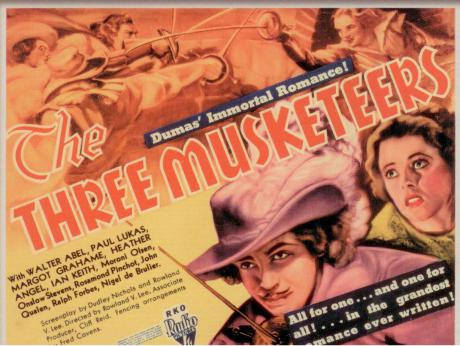
After Broadway, he made his film debut in a 1935 adaptation of The Three Musketeers. A young RKO contract player named Lucille Ball can be glimpsed among the background players. He later played a different role in a 1939 comedy version of the story, starring Don Ameche as D'Artagnan and the Ritz Brothers. He even did a third version titled At Sword’s Point (aka Sons of the Musketeers) starring “Lucy” guest star Cornel Wilde. Olsen returned to the role of Porthos, now elderly, that he created in 1935. Alan Hale Jr. played his son, also named Porthos.

A year later, in 1936, Lucille Ball’s name was finally among the credits (though not yet on the poster) with Olsen in The Farmer in the Dell.

His most famous role was the voice of the Slave in the Magic Mirror in Walt Disney's Snow White and the Seven Dwarfs (1937). He was also heard but not seen as the voice of Joseph, the senior angel in It's a Wonderful Life (1946).

Olsen did two films with William Frawley: Rose of Washington Square (1939) and We’ve Never Been Licked (1943).
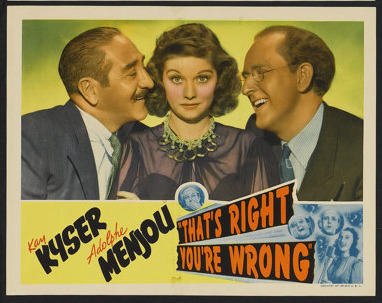
In Kay Kyser’s That’s Right, You’re Wrong (1939) a brunette Lucille Ball was was finally on the poster, and Olsen was not!

In 1952, Olsen appeared as the Judge on the “I Love Lucy” episode “The Courtroom” (ILL S2;E7). Olsen previously played a Judge in East of the River (1940) starring John Garfield and Off the Record (1939) with Pat O’Brien.
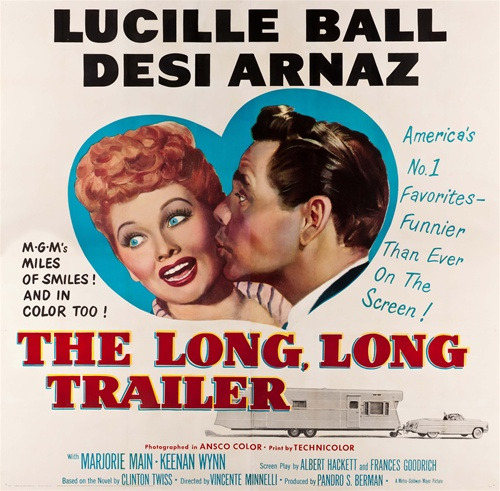
In 1954, he played Mr. Tewitt in Lucy and Desi’s The Long, Long Trailer. Olsen plays the man Taci (Desi) dissuades from buying a trailer as the film begins. The film is told in flashback to justify his opinion.

In October 1954, Olsen played a police officer on an episode of “December Bride”, a Desilu series featuring “I Love Lucy” actors Harry Cheshire, Verna Felton, and Sam McDaniel.
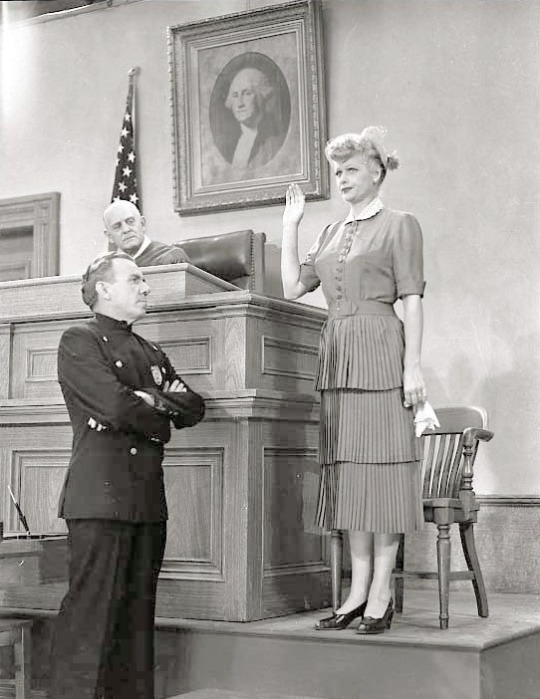
A month later, Olsen died of a heart attack at age 65. He left one film and one television episode to be aired posthumously. Unmarried with no children, Olsen was survived by his nephew, Edward.

#Moroni Olsen#Lucille Ball#I Love Lucy#The Courtroom#William Frawley#December Bride#The Three Musketeers#The Long Long Trailer#Broadway#Mormon#TV#Film#Hollywood#Desi Arnaz#That's Right You're Wrong#Snow White#It's A Wonderful Life
4 notes
·
View notes
Photo

TV Guide - March 28 - April 3, 1959
Ernest Jennings Ford (February 13, 1919 – October 17, 1991), known professionally as Tennessee Ernie Ford, recording artist and television host who enjoyed success in the country and Western, pop, and gospel musical genres. Noted for his rich bass-baritone voice and down-home humor, he is remembered for his hit recordings of “The Shotgun Boogie” and “Sixteen Tons”.
He took over from band-leader Kay Kyser as host of the TV version of NBC quiz show Kollege of Musical Knowledge when it returned briefly in 1954 after a four-year hiatus. He became a household name in the U.S. largely as a result of his hilarious portrayal in 1954 of the ‘country bumpkin,’ “Cousin Ernie” on three episodes of I Love Lucy.
Ford subsequently helmed his own prime-time variety program, The Ford Show, which ran on NBC television from October 4, 1956, to June 29, 1961. The show was named not after Ernie, but rather, the sponsor – Ford automobiles. Ford Theatre, an anthology series, had run in the same time slot on NBC in the preceding 1955–1956 season. Ford’s program was notable for the inclusion of a religious song at the end of every show; Ford insisted on this despite objections from network officials who feared it might provoke controversy. This became the most popular segment of his show. He earned the nickname “The Ol’ Pea-Picker” due to his catch-phrase, “Bless your pea-pickin’ heart!”.
From 1962 to 1965, Ford hosted a daytime talk/variety show, The Tennessee Ernie Ford Show (later known as Hello, Peapickers) from KGO-TV in San Francisco, broadcast over the ABC television network.
In 1968, Ford narrated the Rankin/Bass Thanksgiving TV special The Mouse on the Mayflower. The mouse narrator seen at the beginning of the special, William the Churchmouse, was a caricature of Ford. (Wikipedia)
5 notes
·
View notes
Text
LUCY on MIKE DOUGLAS
1968-1989

“The Mike Douglas Show” was a daytime television talk show that was hosted by Mike Douglas. Initially, it aired only in Cleveland during much of its first two years, followed by expansion to Philadelphia and nationwide.
It went into syndication in 1963 and remained on television until 1981. For much of its run, it originated from TV stations in Cleveland and Philadelphia. The show helped introduce entertainers such as Barbra Streisand and Aretha Franklin. After the move to Philadelphia, Douglas also attempted to revive his own singing career, logging his lone Top 40 single as a solo artist, "The Men In My Little Girl's Life" in 1966. By 1967, “The Mike Douglas Show” was broadcast to 171 markets and 6,000,000 viewers each day, mostly women at home. In July 1978, the show's home base was transferred to Los Angeles, where it remained until finally going off the air in 1981. The show earned four Emmy Awards over its many years, both in Daytime and Primetime.

Michael Delaney Dowd Jr. aka Mike Douglas (1920-2006) was a big band singer, entertainer, talk show host, and actor. Douglas joined the big band of Kay Kyser as a singer making his screen debut with them in 1944. In 1950 he was the singing voice of Prince Charming in Disney's animated feature Cinderella (“So This Is Love”). Douglas died on his 81st birthday in 2006. He was married to Genevieve Purnell from 1943 to his death. They had three children.
March 29, 1968

Ozzie & Harriet Nelson (co-hosts), Vivian Vance, Neil Diamond, Pearce Sisters
Two weeks earlier, “The Lucy Show” ended after six seasons on the air. Ball was busy re-formatting her show as “Here's Lucy” for the fall.
May 6, 1968

“Salute to the Armed Forces Week”
Peter Dawkins (co-host), Omar Bradley (on telephone), Lt. General Stanley Larsen
Less than two weeks later, Lucille Ball was seen at the 20th Annual Emmy Awards, where she won Best Actress in a Comedy for “The Lucy Show.” The show itself lost to “Get Smart.”
January 29, 1970

Tony Sandler and Ralph Young (co-hosts), Allen Funt
Three days earlier, Vivian Vance returned to work with Lucy on “Lucy and Viv Visit Tijuana” (HL S2;E19). Allen Funt made an appearance as himself and his evil impostor on “Lucy and Candid Camera” (HL S4;E14) airing December 13, 1971.
November 6, 1975

Robert Blake, Michael Caine, Roger Moore, War (musical guest)
Three days earlier, Lucy and Jackie Gleason starred in “Three for Two,” one of the Lucille Ball specials.
November 19, 1976

Marvin Hamlisch (co-host), Arte Johnson, Glenda Jackson, Tom Waits (musical guest), taped interview with Lucy and Gary Morton
Ten days after this appearance CBS feted Ball with “Lucy and CBS: The First 25 Years” marking a quarter century since the premiere of “I Love Lucy.” Douglas's interview with Lucy and Gary was videotaped, not in the studio. Arte Johnson appeared in “Lucy is a Bird-Sitter” (HL S6;E15) in 1974.
December 9, 1976

Kevin Dobson (co-host), Billy Fellows, Donny Most, Sam Summerlin, Joe Dispenza, Blue Magic (musical guest)
That evening, Lucille Ball guest-starred on Dick Van Dyke's short-lived variety show “Van Dyke and Company.”
October 4, 1978

James Stewart (co-host), Billy Crystal, Joyce DeWitt, David Copperfield, A Taste of Honey (musical guest)
A week earlier, Ball had appeared on “General Electric's All-Star Anniversary” (above) on ABC. Joyce DeWitt was the star of one of Lucille Ball's favorite sitcoms, “Three's Company.” She hosted the show's best-of retrospective in 1982. Although Stewart was Ball’s friend and neighbor, the two never acted opposite each other on film or television. They appeared together on many award shows and specials. He presents Lucy with a plaque at the end of “Lucy and CBS: The First 25 Years.”
October 30–November 3, 1978

Lucille Ball (week-long co-host)
October 30 – Desi Arnaz Jr., Natalie Wood, Dick Van Patten, Katherine Helmond, Roger & Roger
October 31 – Sally Struthers, Senor Wences, Jan & Dean (musical guest)
November 1 – Gale Gordon, Gavin MacLeod, Bob Williams & Louis the Dog, Florence Henderson
November 2 – Lucie Arnaz, Arthur Hill, Guy Hovis, Ralna English (musical guest)
November 3 - Gary Morton, Bob Hope, Dick Martin, Joe Namath, Susan Anton, Melissa Sue Anderson

In addition to her husband (Gary Morton, not Garry Moore as the above ad asserts!) and children (Lucie and Desi Arnaz Jr.), co-host Lucille Ball also recruits her frequent TV co-star Gale Gordon, and friend and movie co-star Bob Hope. Dick Martin was also a friend of Ball's, having played Harry, Lucy Carmichael's boyfriend in the first season of “The Lucy Show.” He would also frequently partner with her on “Password.” Joe Namath made a guest appearance as himself on “Here's Lucy” in 1972. Bob Williams and Louis the Dog also appeared on “Here's Lucy,” in a 1973 episode where Lucy Carter takes over a dog grooming boutique.

“The Mary Tyler Moore Hour” - March 4, 1979
Mary tries to get Lucille Ball to appear on her show on short notice when her scheduled guest suddenly becomes ill. Although Lucy wants to do the show, she must first get talk-show host Mike Douglas' permission to be absent the following day, as she is contracted to be his co-host for the week. Mary and Lucy decide to ask Douglas for his consent on live television. [This sitcom / variety show was taped during Ball's co-hosting gig on “The Mike Douglas Show” (above).]
February 7, 1980

Mariette Hartley (co-host), Jim Bailey, David Letterman, Victoria Principal and her husband Patrick Boyriven, Morris Katz, Freda Payne (musical guest)

Katz teaches Mike and the guests how to do “toilet paper art”. Lucy’s creation is judged the winner!
Ball was busy promoting “Lucy Moves To NBC” which aired the following day. Jim Bailey appeared on “Here's Lucy” as himself and as Phyllis Diller on a 1972 episode.
July 2, 1980

Erik Estrada (co-host), Gary Morton, Brodie Greer, Paul Linke, Randi Oakes, Todd Rundgren & Utopia (musical guest), The Whispers (musical guest)
Lucy appears with her husband Gary. During this period, Lucy was under contract to NBC, but not doing very much. The photo above was taken one month later in Los Angeles.

#the mike douglas show#Mike Douglas#Lucille Ball#Lucy#TV#talk show#Gary Morton#TV Guide#Vivian Vance#Jackie Gleason#Dick Van Dyke#The Mary Tyler Moore Hour#Mary Tyler Moore#Three for Two#Emmy Awards#Here's Lucy#Lucy Moves to NBC#Bob Hope#Lucie Arnaz#Desi Arnaz Jr.#Van Dyke & Company#Lucy and CBS: The First 25 Years
3 notes
·
View notes
Photo

TV Guide - March 23 - 29, 1957
Ernest Jennings Ford (February 13, 1919 – October 17, 1991), known professionally as Tennessee Ernie Ford, recording artist and television host who enjoyed success in the country and Western, pop, and gospel musical genres. Noted for his rich bass-baritone voice and down-home humor, he is remembered for his hit recordings of "The Shotgun Boogie" and "Sixteen Tons".
He took over from band-leader Kay Kyser as host of the TV version of NBC quiz show Kollege of Musical Knowledge when it returned briefly in 1954 after a four-year hiatus. He became a household name in the U.S. largely as a result of his hilarious portrayal in 1954 of the 'country bumpkin,' "Cousin Ernie" on three episodes of I Love Lucy.
Ford subsequently helmed his own prime-time variety program, The Ford Show, which ran on NBC television from October 4, 1956, to June 29, 1961. The show was named not after Ernie, but rather, the sponsor – Ford automobiles. Ford Theatre, an anthology series, had run in the same time slot on NBC in the preceding 1955–1956 season. Ford's program was notable for the inclusion of a religious song at the end of every show; Ford insisted on this despite objections from network officials who feared it might provoke controversy. This became the most popular segment of his show. He earned the nickname "The Ol' Pea-Picker" due to his catch-phrase, "Bless your pea-pickin' heart!".
From 1962 to 1965, Ford hosted a daytime talk/variety show, The Tennessee Ernie Ford Show (later known as Hello, Peapickers) from KGO-TV in San Francisco, broadcast over the ABC television network.
In 1968, Ford narrated the Rankin/Bass Thanksgiving TV special The Mouse on the Mayflower. The mouse narrator seen at the beginning of the special, William the Churchmouse, was a caricature of Ford. (Wikipedia)
9 notes
·
View notes
Text
Hear Cincinnati Podcast: What happened to Kyle Plush; Jesse Jackson takes on <b>Kroger</b>
This week on Hear Cincinnati, host Brian Niesz, digital reporter Lucy May, editor Meghan Wesley and content coordinator Scott Kyser discuss Fiona, undocumented immigrants, Mark Zuckerberg's testimony to congress, the Paterno TV movie, new reports on smoking while pregnant and more. Brian then ... from Google Alert - "fred meyer" | "king soopers" | kroger | ralphs | fry's | qfc | dillons | -"john kroger" -"qatar" -"stephen fry" https://ift.tt/2IT3n6H via IFTTT
0 notes
Text

"lucis." kyser sighed, wiping a hand over his face. "i wanted to do something with you, actually with you. not just with your face buried into a computer." kyser finally sat, curling up next to the other with a pout on his lips.

Lucis rolled his eyes "I'm not picking a fight." he replied, typing away on his laptop. "i'm just saying, you want to do something nice together, this is what i think is nice." he said gesturing to his laptop and the couch.
7 notes
·
View notes